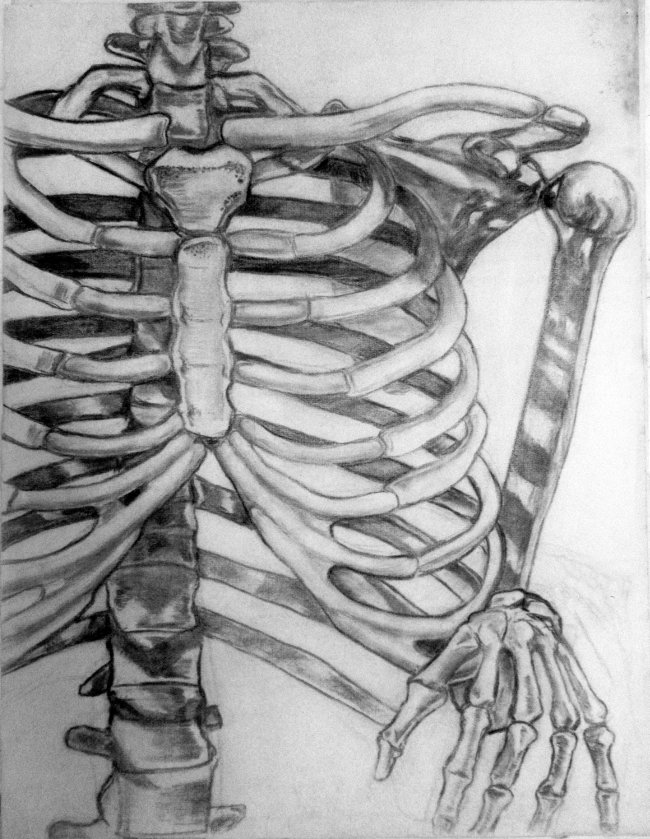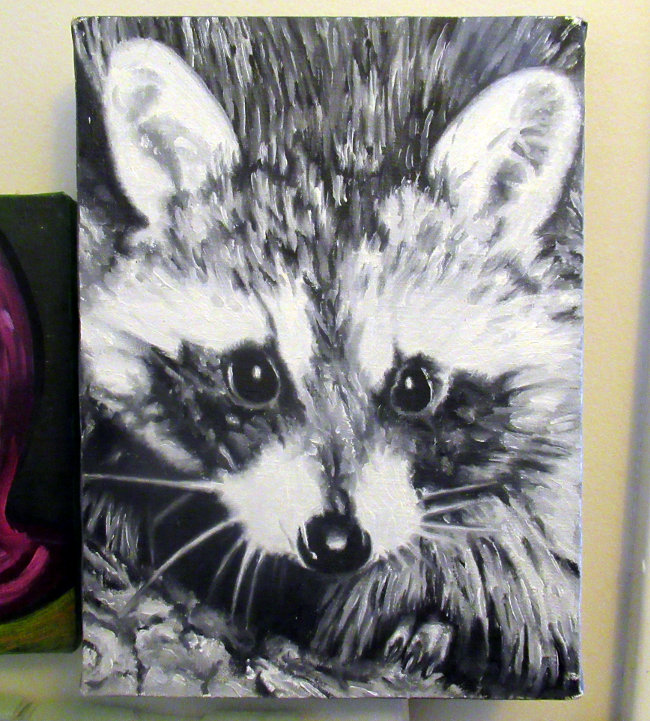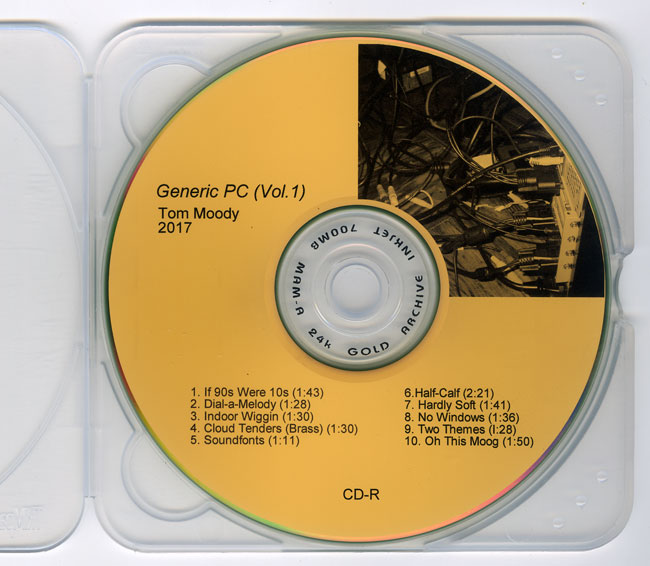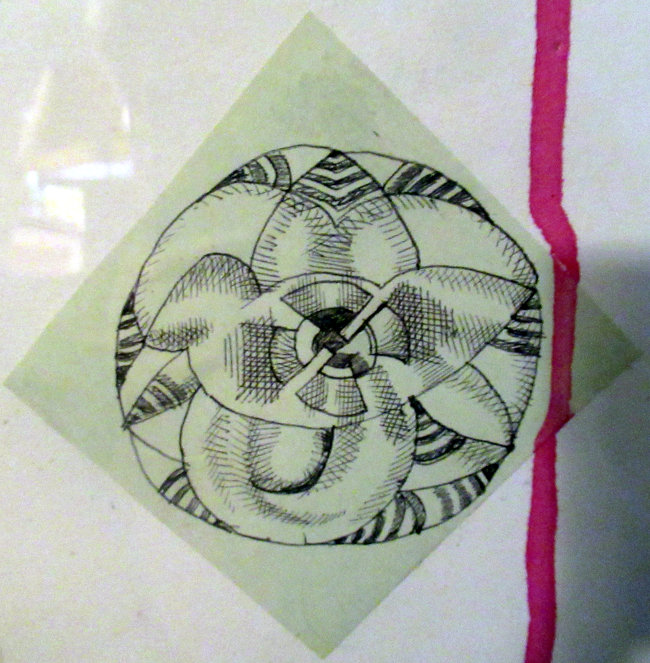I took Life Drawing my first semester in college. The professor was Bob Barbee, a short-statured man with a mustache, vaguely military bearing, and a constant cigar in hand or mouth. He would walk around the classroom critiquing students' knowledge of anatomy and offered very little else in the way of art insight. Supposedly one of my classmates "came all the way from Los Angeles to Virginia to study with Bob Barbee" because of the professor's anatomical expertise.

Above is one of my drawings from the class; I was 17 or 18. Were I the teacher I might compliment the aggressive foregrounding (Barbee didn't tell us which part of the skeleton to draw so that was my framing) and the almost abstract emphasis on patterning in the bones and shadows. Or perhaps the use of the hand bones as a punning coda to the rib arrangement. My recollection is that Barbee stopped in front of the drawing and said something like "The xiphoid process should be more elongated, and you need to work on the angle of the acromion." That's the only kind of comment he ever offered.
Later, I decided to complete a studio art major in my last year and a half of college (plus a couple of summers), after having finished my required courses for an English Lit major. Barbee was the only instructor who opposed this "crash course" of almost full-time art practice. He felt like a major should be stretched out over four years of schooling. I had "A" grades in every art class I took except Barbee's. He gave me a B for the Life Drawing class and a C+ for his figure painting class (where students hammered out anatomically correct "mud women," as another professor called them). His reasons for the grade had nothing to do with the quality of the paintings but his belief that I didn't work on them obsessively enough. He pointed admiringly to another classmate, Susan F________, who came in after class hours to work on her painting. (Which is true but she was a clumsy painter and her piece was probably worsened by all the extra effort.) Barbee also candidly admitted he gave me the C+ because he felt I shouldn't be taking so many art courses at the same time.
At the time I took his classes I had never seen his own work. Years later I saw an image of some tree logs in a swamp (I think) done in a somewhat Thomas Hart Benton-esque style. I wasn't too impressed. I was correct about his military background. An obituary notice for Barbee [https://art.as.virginia.edu/sites/art.as.virginia.edu/files/FallWinter2002.pdf] says that his "early training was interrupted by World War II, when he served in the Army Air Force as a bombardier/navigator in Italy." The writer goes on to note, diplomatically, that
"Bob’s work was widely exhibited early in his career. He was represented by a well-regarded gallery in New York, and was included in regional exhibitions in Virginia and the Southeast. His early paintings show the influence of Cézanne and some of the School of Paris painters who were fashionable at mid-century, influences that became less and less important as his art matured. His painting became less abstract and more personal. He came to rely more and more on his keen observation and his real gift as a draftsman. He worked slowly and carefully, sometimes spending years on a painting, and became less interested in exhibiting his work or promoting himself as an artist."
So the moral of the story is, spend years on a painting.



